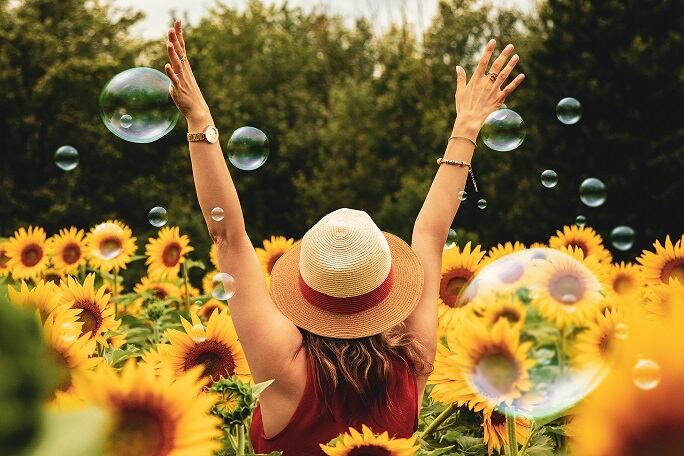Over the past few years, the consumer’s perception of themselves have shifted. In Mintel’s 2018 report on beauty and personal care trends, it said that consumers no longer want to be defined by age, body type, sexuality, or gender.
“We are certainly living in a time of great desire for individual expression,” said Terry Jacobson, founder and CEO of Oo La Lab, a craft fragrance lab in Singapore. “There has been a modernisation of our collective approach to gender, certainly the boundaries have become more fluid but this goes both ways.”
Mintel observed that beauty consumers are among those who especially value their individuality, and see themselves as more than just part of a demographic. As such, brands can no longer simplify complex individuals by tagging them with labels based on one facet of their lives.
The scent of freedom
As people begin to celebrate their diversity and uniqueness, individuality becomes a key consideration when selecting something as intimate as a fragrance.
Susan Tan, Marketing Manager at Luxasia said, “Even though genderless fragrances are not a new concept, it is gaining popularity as the millennials are more open and willing to wear fragrances reflect their personality and triggers an emotion within them.”
As this trend continue to grow, finding a signature scent that defines one’s individuality has become just as important as the pleasantness of the fragrance itself.
Jason Lee, founder of Singapore-based artisanal fragrance label SIX, said that overtly feminine or masculine fragrances, which are inherently created from a traditional template, stands in contrast with the goal of being individual or unique.
“People play with scent layering and mixing in the aim to find their unique identity. Traditionally, perfumes are created and branded by companies into clear genders. To break out of the mould, more gender friendly options are born to cater to the ‘customisation hungry’ generation,” he said.
Short of visiting an atelier to personalise their own scents, consumers turn to gender-neutral fragrance to find the One. Lee said: “In any legitimate perfume, there are at least 250 to 300 unique ingredients to make up that complexity. Under the tab of genderless scents, there are many facets and interpretations.”
No signs of slowing down
According to data from Euromonitor, sales of premium fragrances targeted at both men and women have grown 25% globally from 2012 to 2017. In the APAC region, sales grew 53.1% for the same period.
Luxasia, which includes many niche fragrances that specialise in gender-neutral fragrances such as Serge Lutens, Byredo and Le Labo, does not see the trend slowing down, said its Business Manager Ashley Gay.
“There’s definitely a demand for such products as consumers get more sophisticated in the way that they relate to a specific scent, rather than be confined to the traditional male or female scent classification,” she said.
In a similar vein, Valerie Boffy, CEO and co-founder of Waft.co has noticed a significant percentage of her customers, both male and female, choosing genderless fragrances.
“Noses have moved from very masculine or feminine scents to create new signatures which have ingredients that are used traditionally for one gender and blending them to create unexpected signature scents,” she explained.
According to Jacobson, fresh, unique and timeless are a few popular adjectives consumers use these days to describe a scent they want. He added that marine, ozone and green notes are popular among those who are prefer genderless scents.
“Selling a dream”
As consumers’ preferences for scents change, marketing strategies will have to adapt as well.
Lee, who spent four years in sales and marketing at fragrance house Givaudan before starting his own company, conceived SIX as a genderless brand. Its scents are not categorised at all, nor are there any inkling of gender-based marketing in its labelling or copy.
“SIX is a gender-neutral brand and forever will be,” said Lee. “We strongly believe that a fragrance should not be demarcated by gender. It is up to the consumer to find their identity or identify themselves with the story inspiration behind the fragrance.”
Instead, SIX appeals to consumers by evoking dreamy visions of white beaches, icy landscapes, and buzzing metropoles. “We are not selling just scents, we are selling a story, a dream, an imagination,” said Lee.
Future of fragrance
Although gender, identity, individuality continue to evolve, traditional gendered fragrances will not become a thing of the past, agreed the perfumers.
“In one sense, they represent a time gone by,” said Jacobson. “In another sense they hold nostalgia and we may continue to wear them because they reflect a part of our own identity and emotional psyche.”
“I do not see unisex trend replacing all the amazing signatures that are traditionally classified as feminine or masculine,” said Boffy. “But I could see men and women crossing categories to wear specific fragrances which they like, which suit their mood, their moments, their emotions and which are not specifically gender related. “
Lee shared the sentiments of Boffy and Jacobson. “Some of the timeless classics like No. 5, Coco Mademoiselle, Cool Water and One Million I believe will stand steadfast in the test of time,” he said. “It is how you wear them that matters.”





